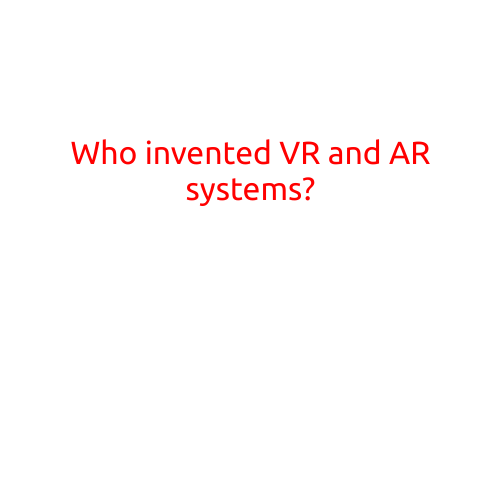
Who Invented VR and AR Systems?
Virtual Reality (VR) and Augmented Reality (AR) have revolutionized the way we interact with technology, immersing us in new and innovative ways. From gaming to education, healthcare, and entertainment, VR and AR have transformed various industries and aspects of our lives. But have you ever wondered who invented these revolutionary systems?
The Origins of Virtual Reality
The concept of Virtual Reality dates back to the 1960s, when computer scientists and engineers first began exploring the idea of creating a simulated environment that mimicked reality. One of the pioneers of VR is Morton Heilig, a Danish computer scientist who invented the first VR system, the Sensorama, in 1957. The Sensorama was a mechanical device that simulated the experience of riding a motorcycle, complete with wind-in-the-hair, engine noise, and vibrating seats.
Another important figure in the development of VR is Ivan Sutherland, an American computer scientist who created the first VR headset in 1968. Sutherland’s headset, called the “Head-Mounted Display,” was a bulky device that displayed a simple image on a screen attached to a user’s head.
In the 1980s and 1990s, VR technology began to advance rapidly, with the development of more sophisticated headsets and graphical interfaces. Companies like VPL Research (founded by Jaron Lanier) and Silicon Graphics Incorporated (SGI) played a significant role in shaping the VR industry.
The Evolution of Augmented Reality
Augmented Reality, on the other hand, has its roots in the 1990s, when computer scientist Tom Caudell first coined the term “Augmented Reality” at Boeing. Caudell’s work on AR was focused on using computers to enhance one’s surroundings, such as displaying information on a map or on a product.
In the early 2000s, AR began to gain popularity, particularly with the release of games like Pokémon Go, which used a mobile device’s camera and GPS to superimpose virtual objects onto the real world.
Notable Innovators and Companies
Some notable innovators and companies that have contributed to the development of VR and AR include:
- Palmer Luckey, who founded Oculus VR, a company acquired by Facebook, and developed the first Oculus Rift headset.
- HTC and Valve Corporation, which collaborated on the Vive VR headset.
- Microsoft, which developed the HoloLens AR headset.
- Magic Leap, a company that created the Magic Leap One AR headset.
Conclusion
The development of VR and AR systems is a story of innovation and collaboration, with numerous individuals and companies contributing to the evolution of these technologies. From the early pioneers like Morton Heilig and Ivan Sutherland to modern-day innovators and companies like Palmer Luckey, HTC, and Magic Leap, the journey to create immersive and interactive experiences has been long and complex. As VR and AR continue to shape our world, it’s exciting to think about the possibilities that future innovations may bring.





